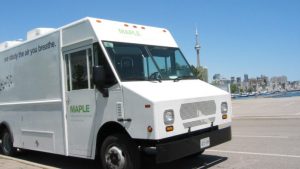 Professor
ProfessorB.A.Sc., M.A.Sc., Ph.D., P.Eng., FCAE, FAAAS
Director, Institute for Studies in Transdisciplinary Engineering Education and Practice (ISTEP)
Director, Southern Ontario Centre for Atmospheric Aerosol Research (SOCAAR)
Director, Collaborative Graduate Program in Engineering Education
Principal Investigator, Evans Research Group
Room: WB127 | Tel: 416-978-1821 | Email: greg.evans@utoronto.ca
Awards
CIC Environment Division Research and Development Dima Award, 2022
NSERC Brockhouse Canada Prize for Interdisciplinary Research, 2021
Fellow of the Canadian Engineering Education Association, 2020
3M National Teaching Fellowship, 2017
Faculty of Applied Science & Engineering Research Leadership Award, 2017
President’s Teaching Academy, 2015
Fellow of the Canadian Academy of Engineering, 2015
Ontario Colleges and Universities Faculty Association Teaching Award, 2015
Fellow of the American Association for the Advancement of Science, 2015
Faculty Teaching Award, 2014
Allan Blizzard Award from the Society for Teaching and Learning in Higher Education, 2014
Northrop Frye Award for Linking Teaching and Research, 2013
American Society for Engineering Education St. Lawrence Section Outstanding Teaching Award, 2010
Engineers Canada Medal for Distinction in Engineering Education, 2010
The Bill Burgess Teacher of the Year Award (Chemical Engineering), 2009
The Ontario Professional Engineers Award Engineering Medal- Research and Development, 2009
Joan E. Foley Student Quality of Student Experience Award, 2008
Memberships
American Association for Aerosol Research
Canadian Nuclear Society (past Chair of Toronto Branch)
Professional Engineers of Ontario
American Society for Engineering Education
American Geophysical Union
Canadian Society for Chemical Engineering
American Association for the Advancement of Science
Canadian Engineering Education Association
Research Interests
Urban Air Pollution

My research examines air pollution using advanced instrumentation and data mining. Our goal is to make key connections between emissions of pollutants, the quality and composition of urban air, and the impacts on human health and the environment. Focus areas include traffic related air pollution, Identifying the sources of pollution, development of inexpensive sensors, and understanding how the sources and composition of particulate matters influences its potential to induce oxidative stress. Most of my research is executed through the Southern Ontario Centre for Atmospheric Aerosol Research (SOCAAR). SOCAAR is an interdisciplinary centre for the study of air quality, with a focus on how aerosol particles impact human health and the environment.
Engineering Education
As the Director of the Institute for Studies in Transdisciplinary Engineering Education and Practice (ISTEP) and the Collaborative Specialization in Engineering Education (EngEd), I am also very interested in the scholarship of teaching and learning. ISTEP is a new department with 11 faculty that is taking a deeper look at what we teach engineering students, what they will do after they graduate, and how they learn the competencies and skills that will help them enjoy successful careers and bring benefits to society. The EngEd is a collaborative learning community that brings together graduate students from UofT’s Faculties of Engineering and Education. I am currently pursuing research related to the instructions of transdisciplinary competencies, metacognition, lab-based-learning, lifelong skills development, and mining student data to create richer holistic pictures on student leaning experiences.
Recent Publications
- Weichenthal, S. Lavigne, A. Traub, H. You, K. Godri Pollitt, T. Shin, R. Kulka, D. Stieb, B. Jessiman, J. Brook, M. Hatzopoulou, G. Evans, R. Burnett “Association of Sulfur, Transition Metals, and Oxidative Potential of Outdoor PM2.5 with Acute Cardiovascular Events: A Case-Crossover Study of Canadian Adults” Environ. Health Perspect. 129(10), 2021 https://doi.org/10.1289/EHP9449 (IF 9.06)
- Jeong C-H, M Yousif, G. J. Evans “Impact of the COVID-19 lockdown on the chemical composition and sources of urban PM2.5” Pollut. 292 118417, 2022 (IF 8.07)
- Caumo S., A. Traub, G. Evans, P. Vasconcellos “Atmospheric Particulate Matter and Adverse Effects from 2015 to 2018: Oxidative Potential Variation near an Industrial Complex in São Paulo.” Atmos Pollut Res. 13(7) 1016/j.apr.2022.101457 (IF 3.53)
- Korsiak J., E. Lavigne, H. You, K. Pollitt, R. Kulka, M. Hatzopoulou, G. Evans, R.T. Burnett, S. Weichenthal “Air Pollution and Pediatric Respiratory Hospitalizations: Effect Modification by Particle Constituents and Oxidative Potential” J. of Respir. and Crit Care Med. Accepted Jul 2022 10.1164/rccm.202205-0896OC (IF 17.45)
- Jeong CH,, N Hilker, JM Wang, J Debosz, RM Healy, U Sofowote, T, Munoz, D. Herod, G. Evans “ Characterization of winter air pollutant gradients near a major highway Sci Total Environ, 849, 157818, 2022 1016/j.scitotenv.2022.157818 (IF 6.55).
- Shahpoury P, Z-W Zhang , A. Filippi, S. Hildmann, S. Lelieveld, B. Mashtakov, B. R. Patel, A. Traub, D. Umbrio, M. Wietzoreck, J. Wilson, T. Berkemeier, V. Celo, E. Dabek-Zlotorzynska, G. Evans, T. Harner, K. Kerman, G. Lammel, M. Noroozifar, U. Pöschl, H. Tong “Inter-comparison of oxidative potential metrics for airborne particles identifies differences between acellular chemical assays” Pollut. Res. 12(12) 101596, 2022 10.1016/j.apr.2022.101596 (IF 4.8)
- Weichenthal, S. Lavigne, H. You, K. Godri Pollitt, T. Shin, R. Kulka, D. Stieb, B., M. Hatzopoulou, G. Evans, R. Burnett “Daily Summer Temperatures and Hospitalization for Acute Cardiovascular Events: Impact of Outdoor PM2.5 Oxidative Potential on Observed Associations across Canada” accepted Epidemiology May 2023 (IF 4.8)